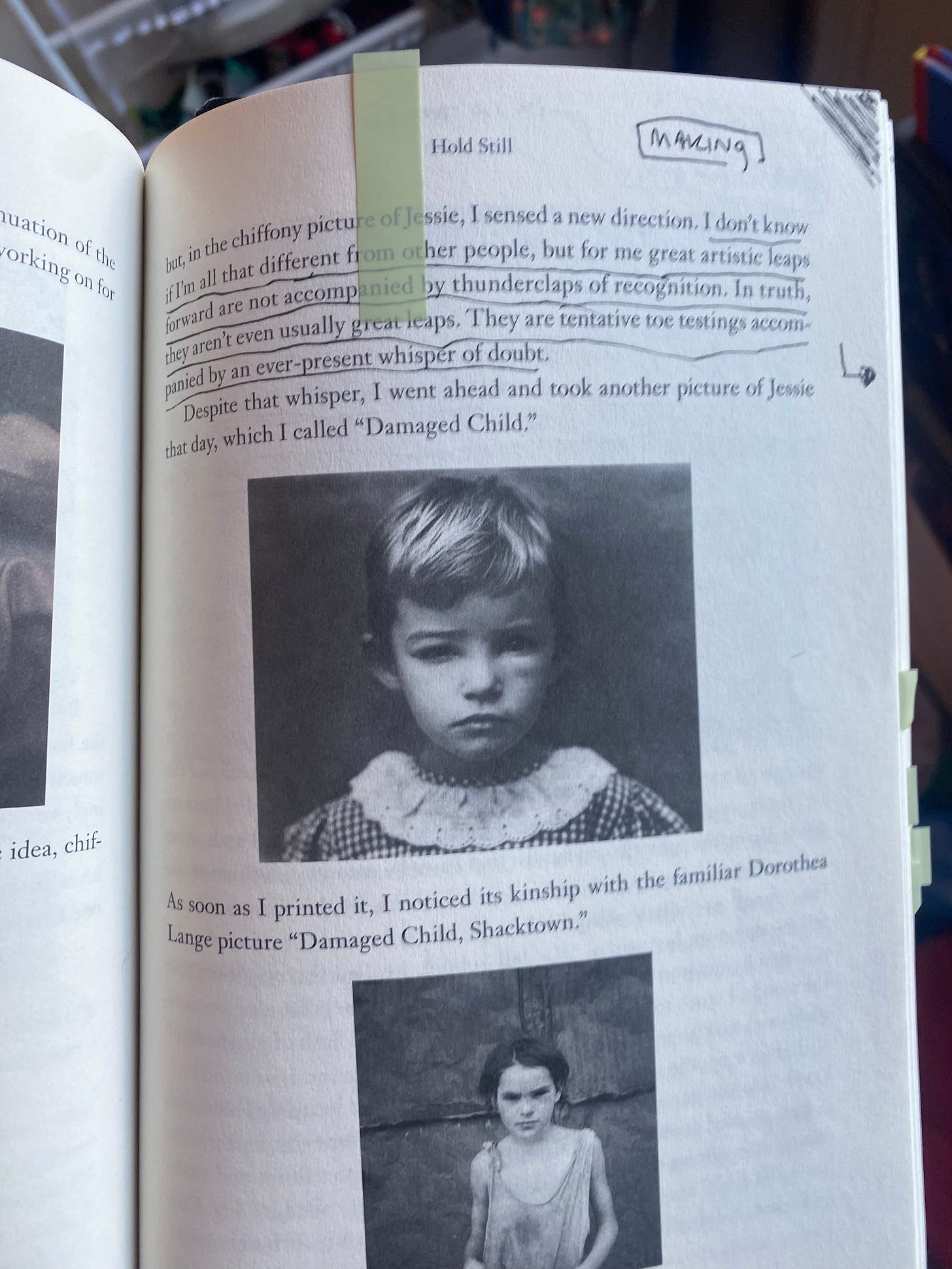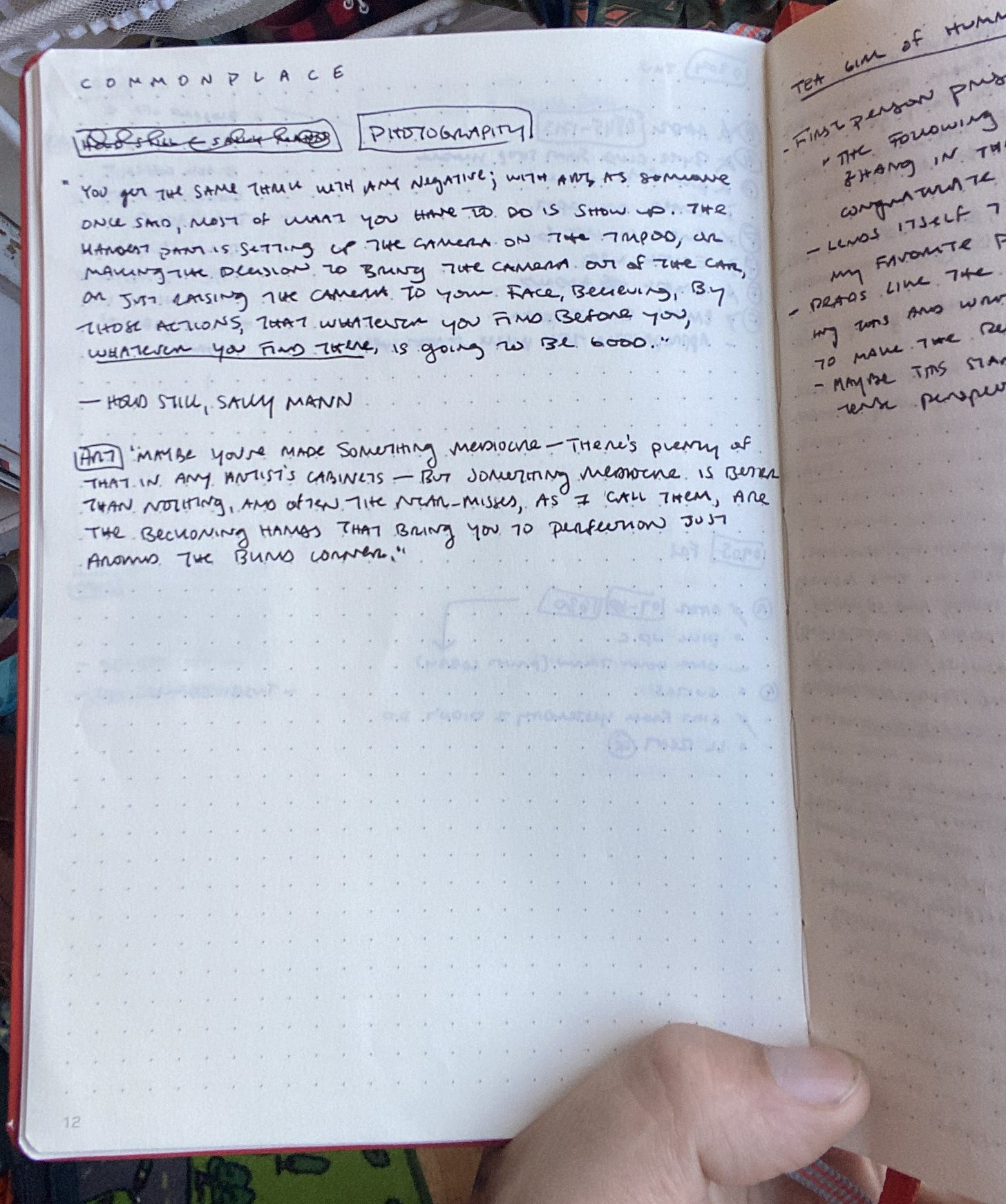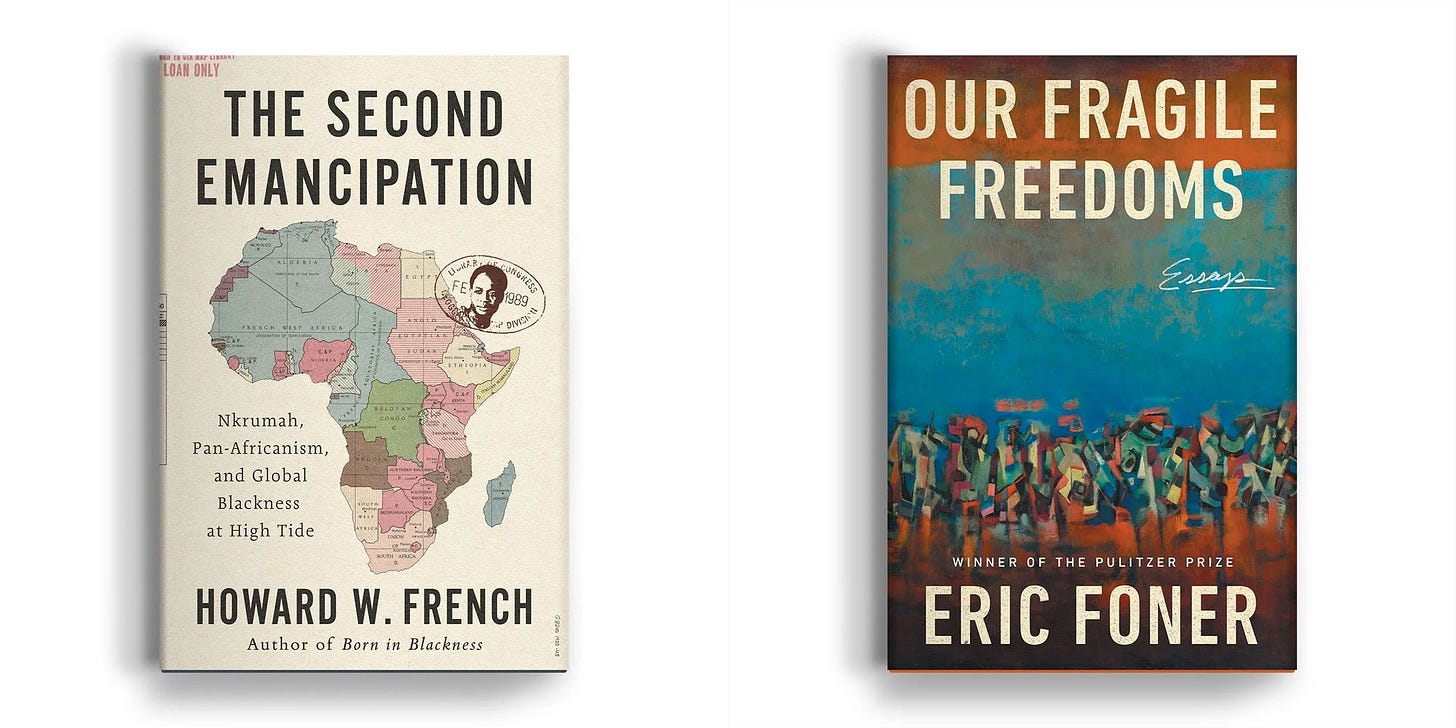A New Approach to My Commonplace Book, Among Other Things
Also: Leaving the Honeymoon Phase, What I'm Reading, and A Book Design Milestone
Hey there.
Life is busy, I am tired, the house is a terrible mess. Today’s newsletter is a bit of a grab bag. I hope you enjoy!
Leaving the Honeymoon Phase
Lately, the writing comes slow and uneven. When there’s time, there is no energy, and when there is energy, no time. I am still building these muscles; I am still learning what it takes to build a writing practice beyond inspiration. It seems I am leaving the honeymoon phase of writing publicly. It lasted more than a year. For a long time, it was easy to write instead of doing something else. Now the real work begins: showing up when it’s not easy.
I love book design but, surprisingly, I don’t necessarily have something worthwhile to say about it every week. I think that’s okay. I want what I write to be worthwhile. It’s good to remember I am a person, not a brand. Right now, continuing to write in general feels more important than writing about book design. I have a few things coming, but I am taking my time with them.
And so: this is the second newsletter in a row not exactly about book design, and not exactly on a schedule. Thanks for being here anyways.
A New Approach to My Commonplace Book
When I struggle to write, it often means it is time to read. In order to remember what I read, and then do anything with said reading, I must take notes.
I’ve taken notes on what I read for a long time, in a variety of ways. But, like the writing, my approach has become laborious, tedious. As such, I’ve neglected the practice. So I’m taking a slightly new tact.
Up until recently, I organized my book notes by title. But, for whatever reason, I found that this approach compelled me to take comprehensive notes on a title. Which means, with the time and energy I currently do not have, I do not take notes on said title. So instead, I’ve turned to a modified approach to the classic commonplace book. The organizing principle here is subject, not title. Here is what I do:
When I read a line in a book I want to save, I underline it like I always have. I annotate with my thoughts if necessary. Then I write a broader, overarching subject word near the passage. I stole this after reading
’s great post on her commonplace book.When it’s time to write the passage in my notebook, I simply turn to a new spread, label this spread “commonplace,” write the subject—or “headword”—and then write the quote. More quotes from this source may follow under this headword, or may not. I might write a new headword on the opposite page. I might write a quote from a different source. It doesn’t matter, because it all gets tracked.
Each headword and the page(s) on which it is found get logged at the beginning of my notebook in my commonplace “index.” If more than one quote from a single source is also copied, I will also note the pages in which this title can be found in the index. When I finish a notebook, I copy my favorite quotes into a digital commonplace book that I can search at any time. This ad-hoc—yet organized—approach allows me to write notes as I go and have time for.
Here I should say that, while I hate calling my notebook a bullet journal, I do use the bullet journal system. It is, to oversimplify it, an indexing system. A way to group related pages that may not be next to each other in my notebook. This means my notebook is my planner, sketchbook, diary, and commonplace book all in one. You can read more about how I use my notebook here
.
In this way, you might find my notes on “photography,” for instance, spread across five different pages in my book. But those five pages are grouped together in my index, and they are “threaded” together on each page by writing the subsequent page numbers in the corners of each spread. This same approach is used for every notebook-within-a-notebook.
Confused yet? I understand this may sound like chaos to many, if not most. Why not keep a separate notebook for each usage? Well, because I am certain I would lose them. One notebook fits much better in my backpack. Using five notebooks at once feels more chaotic to me than this system that I have been using and slowly adding to and tinkering with for the last six years. Ultimately, I love seeing everything mixed together. My diary bumping shoulders with my day’s to-do lists as well as my sketches. My notebooks become time capsules of everything I was thinking about, reading, and working on at a particular point in time.
What I’m Reading
While new notebooking techniques are never far from my mind, I started rethinking my book notes thanks to the chapter about commonplace books in Roland Allen’s The Notebook: A History of Thinking on Paper.1
This book is a wonderful read for notebook lovers! It’s thoroughly researched and well-written. It goes deep into the notebook’s origins and the different ways they’ve been used throughout time. Some chapters interest me more than others—my eyes glaze a bit at the seafaring sections—but I am enjoying the book immensely.
I am also reading Hold Still by Sally Mann (another book recommended by Austin Kleon I have been meaning to read for years). Within the first 50 pages, I could tell this was going to be an all-time favorite. Mann, known for her photography, is a terrific writer. In addition to a compelling personal history, there are meaningful reflections on art making. My copy is getting covered in ink, graphite, and sticky tabs.
The third book I am actively reading is The Tea Girl of Hummingbird Lane by Lisa See. I’m reading this for my two-person book club with my mom. I was put off by the first person, present tense POV at first, but now I am, erm, humming along. There is drama and there is culture clash. The book keeps me turning its pages.
Book Design Milestone
Two books I designed jackets for were recently published. I’ve shared these covers before, but what is special about these books is that they were published by W. W. Norton, one of the largest independent publishers in the U.S. This means that, for the first time, my crappy handwriting book design work will be in major bookstores across the country. Books with my design have been in stores before, but not this scale. It’s an exciting milestone—I’m starting to feel like the real deal.
Thanks for Reading
That’s all for this time. I hope you enjoyed, or at least didn’t mind, this grab bag approach to a newsletter.
If you’d like to keep this newsletter going and help me say no to designing soul-sucking books about corporate events, email marketing, and raising capital, consider becoming a paid subscriber or buying me a coffee.
Until next time,
Nathaniel
Reading this led me to search “commonplace book” on Substack, and then I read Angel Zheng’s great post that I stole some ideas from








Man! I love learning how others use their notebooks! I’m really inspired on how you use yours. I have a chaotic mess of many notebooks for many things. I like having many notebooks, but I’d like to take some tips from your practice to add more order and a sense of “time capsule”.
Thank you for sharing this.
“Confused yet?” Nope! I think you just taught me a method to unconfuse my note taking/journaling. Thanks!